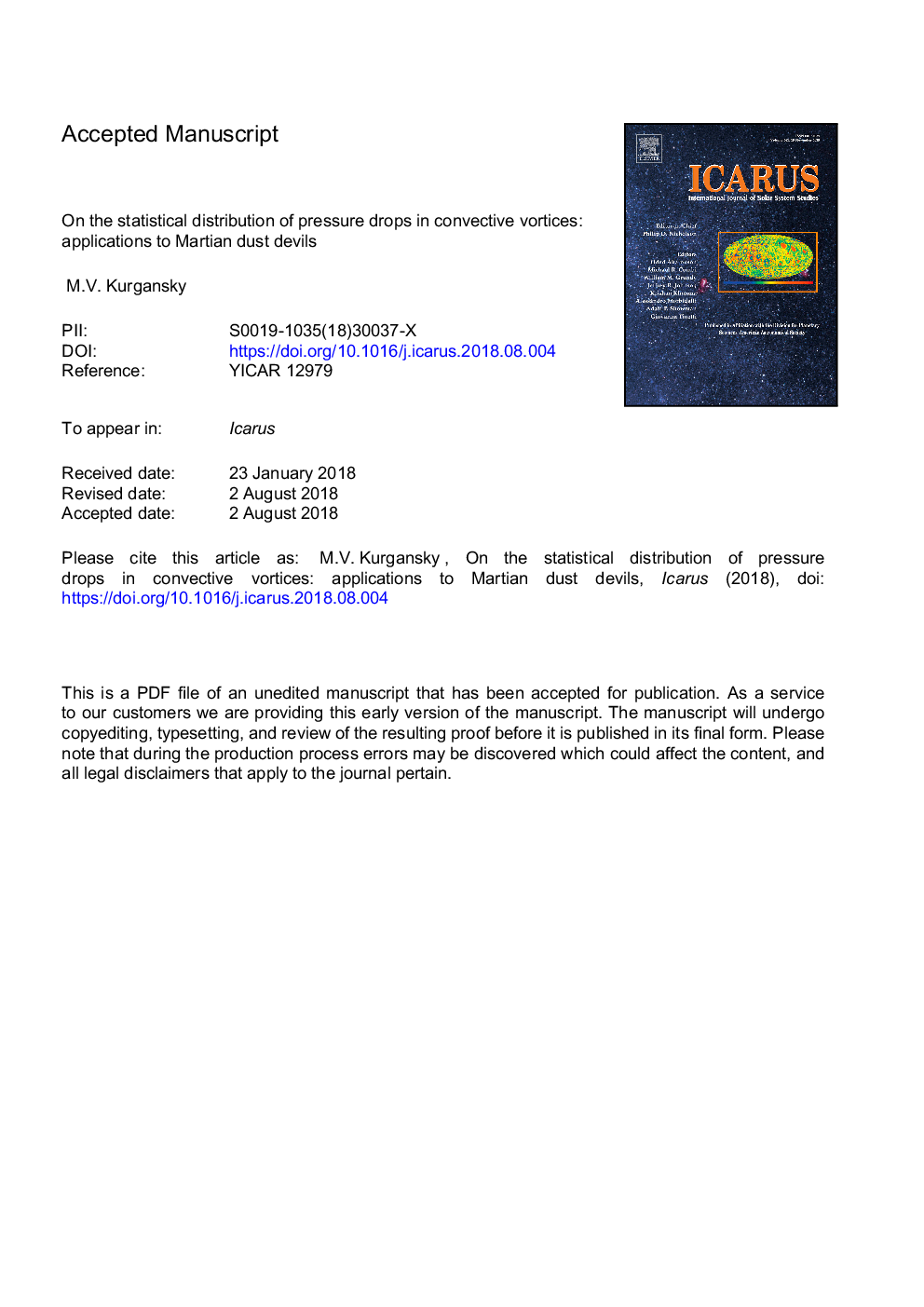| Article ID | Journal | Published Year | Pages | File Type |
|---|---|---|---|---|
| 8133677 | Icarus | 2019 | 25 Pages |
Abstract
A theoretical approach based on the Abel transform is proposed to infer the statistical distribution of the pressure drop in the center of convective vortices, including dust devils, based on measurements of peak pressure drops at a ground-based meteorological station, when the vortices pass over or near the barometric sensor. We show that if the pressure inside the vortex is modeled realistically, then the statistics of observed pressure drops is related to the statistics of pressure drops in vortex centers of the subpopulation of vortices detected by the pressure sensor. This relationship holds for an arbitrary size-frequency distribution of dust devils. The relationship between the observed statistics of pressure drops and the statistics of central pressure drop values for the whole population of vortices depends on the correlation between the dust-devil diameter (defined either optically or as twice the radius of the maximum circumferential velocity in the vortex) and the maximum pressure drop in its center. If the observed statistics can be approximated with a truncated power-law distribution then this approximating distribution is generally biased toward overestimation of the contribution from vortices with larger pressure drops. In a case of no apparent correlation between the vortex diameter and the maximum pressure drop in its center, the measurements provide an unbiased power-law estimate of the actual central pressure drop-frequency distribution. These theoretical results are applied to three sets of observations of Martian convective vortices, including dust devils.
Related Topics
Physical Sciences and Engineering
Earth and Planetary Sciences
Space and Planetary Science
Authors
M.V. Kurgansky,
